These are the must-have Korean cooking ingredients: I can’t tolerate running out of them. I keep replacements in stock at home, and bring a small supply of them with me if I travel for a long time. If you have these items, you can always make some kind of delicious Korean food no matter where you are, including kimchi!
Short grain rice (ssal)
Sticky short grain rice, also known as “sushi rice” is a Korean staple and something that I eat every day. I don’t have a particular brand name of rice that I prefer.
You can easily find this rice at a Korean, Japanese, or Chinese grocery store.
Soy sauce (jinganjang)
Soy sauce has a real unique taste: it’s salty and a little sweet. When you go to a Korean grocery store, you’ll find that they usually stock a dark soy sauce (jinganjang) and a lighter, more salty soup soy sauce (gukganjang).
The darker soy sauce, jinganjang, is what I always use. I don’t use gukganjang because it can always be substituted with fish sauce or a mixture of jinganjang and salt.
Jinganjang makes many things delicious: bibimbap, seasoned vegetables, seafood, and the seasoning sauce for fried tofu or fish. My favorite brand is Sempio but I’m sure other brands are also good.
See all the recipes that use soy sauce
Fermented soy bean paste (doenjang)
The paste tastes salty and earthy. When you have doenjang on hand you can make a lot of dishes: soybean paste stew, soup, ssamjang (dipping sauce) for Korean BBQ lettuce wraps, and many many others.
Good quality doenjang should smell earthy, not stinky, and the color shouldn’t be too dark. After you open the package, be sure to store it in the fridge. I don’t have any particular brand that I prefer: I love Sunchang, Sempio, Haechandeul, and Wong. If any brand is on sale, that’s the one I buy. : )
Homemade doenjang is great try if you can find it, but it’s not easily available. It can taste a lot different than factory made doenjang, depending on who made it.
See all the recipes that use doenjang
Hot pepper paste (gochujang)
This paste is spicy, sweet, salty, and earthy. These days it seems to be getting more and more popular, and not just for Korean food. Some people tell me: “I use gochujang everywhere! It’s my magic paste!”
Even though the main ingredient in gochujang is hot pepper powder, the taste is actually not that spicy. It’s used to make a variety of sauces and is often added to spicy rice cake, fish, meat, vegetables, and many other side dishes. It also enhances the taste of bibimbap.
These days I love the Bibigo brand from CJ, which is a newer product and has a wonderful deep flavor. Assi, Sempio, and Sunchang are also really good. You can also try to make your own gochujang at home.
I sometimes dip dried anchovies in gochujang as I eat my rice. Rice and dried anchovies with hot pepper paste: it’s my simplest meal.
See all the recipes that use gochujang
Hot pepper flakes (gochugaru)
These flakes are spicy and a little sweet. You can find 2 types of gochugaru at Korean grocery stores: spicy and mild. I prefer the milder version these days: I used to like the spicy hot pepper flakes but my tastes have changed over time. The great thing about using mild flakes is that I can use a lot of them in my dishes, which makes them look beautifully bright red and appetizing, without making them too spicy.
Assi brand is good. I always try to choose any brand that uses sun-dried hot peppers, which is indicated by having 태양초 (“taeyangcho”) printed on the package.
See all recipes that use gochugaru
Toasted sesame oil (chamkireum)
This oil has a strong, nutty flavor. Some people don’t like it because of this, but sesame oil is very important in Korean cuisine. We use it to flavor many side dishes, soups, porridges, and even some desserts.
When I grew up in Korea, sesame oil was a precious thing. I remember what I said to my late grandmother: “Grandma, I think chamkireum must be following you around, because all the food you make is so delicious!”
Dip some grilled beef, pork, mushrooms, or vegetables in sesame oil mixed with salt, and they’ll be even more delicious.
See all recipes made from sesame oil
Fish sauce (aekjeot)
This sauce is salty and has a deep umami flavor that is very fishy, but in a good way. I can’t make kimchi without it. It enhances kimchi as well as many side dishes and soups. When you salt your soup, add a little fish sauce with the salt, and your soup will turn out great.
This ingredient is controversial for some people because they think I should be using Korean soup soy sauce (gukganjang) instead, but I’ve never found a commercially available gukganjang that made my dishes as delicious as fish sauce. But it’s up to you: you can use gukganjang if you don’t like the fishy smell of fish sauce. The best gukganjang is homemade, which is difficult to get outside of Korea. It’s also difficult to make at home and really raises a stink.
Maybe someday I will try making my own gukganjang, but in the meantime myself and many other Koreans use fish sauce to make kimchi, soups, and delicious sidedishes.
See all recipes that use fish sauce
Toasted sesame seeds (kkae)
These seeds are unique and nutty, and they make your vegetable side dishes (namul) so tasty. When you eat a side dish sprinkled with crispy sesame seeds, the more you chew, the more seeds you crush and the more flavor you release as you eat.
When I did my Gapshida trip in 2011, I brought a bag of toasted sesame seeds that I toasted beforehand. I used these everywhere I went.



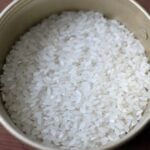

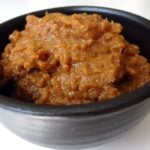


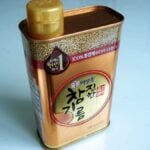

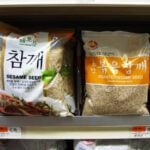

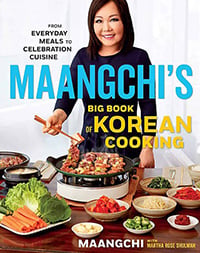

















I just wanted to thank you for your beautiful videos. I have always loved Korean food and was looking for the right recipes to make some delicious Korean food by myself. Thank you ^^
I think I have many of these things. Have you ever tried anchovey paste in tube? I think I could substitute it for dried anchovey. I’ve used it for making Cesar’s salad dressing. It’s not fishy & it adds that umami (sp?) fullness to the flavor. I’m glag I don’t have to have those tiny, salty brine shrimp as an essential Korean ingredient. I had a taste of it as a condiment at a Korean friend’s dinner party & it had a too strong rotten fish taste for me. I almost couldn’t swallow that one! LOL! Thank for all your videos, ect…!
I have an Aroma Stainless pot 20 cup rice maker. I washed my Nishiki rice well, and followed directions, but it was not good rice. I then tried taking my usual 2 1/4 cups Imperial rice, washed and drained and put in the rice cooker pot. I measured the water I put in, till the water was to the first joint of my index finger. This was a little over 4 cups Imp. (4 cup 2 Tbsp?) of water. This seems like too much water, but is making great rice, and only a tiny bit browned on the bottom. I remove all the white rice, then scrape the browned out into a bowl and add sauce or spice for a treat. Hope this helps.
Thank you maanchi.^^ I enjoyed your video very much. And very exciting.
I am Korean, I didn’t cooking very well.
But your video helps to me cookerㅋㅋ
제가 영어를 잘 못해서 제 마음을 영어로 잘 표현 못하지만..요새 망치씨의 비디오를 보면서 요리공부를 즐겁게 하고 있어요. 영어공부도 덤으로 하고 있구요.
제가 현재 있는 곳은 중동쪽이라 여러가지 재료를 구하기가 쉽지 않지만 열심히 발품을 팔아 구하고 있습니다. 저도 열심히 배워서 망치씨 처럼 되고 싶어요.ㅎㅎ 넘 과한 욕심이죠^^
망치씨의 비디오 데로 첨으로 가래떡을 만들어 떡볶이를 해먹었어요. 대단하죠^^
열심히 할께요~~망치씨도 건강하시고 감사드립니다.~~
가래떡 만들기가 쉽지 않은데 떡볶이까지 만드셨다니 대단하시네요! 제 웹사이트가 도움이 된다니 기쁩니다.
It sounds like you are a great cook because your made tteokbokki with your homemade garaetteok! I’m happy to hear that my recipes help you!
@ CynthiaH Have you washed you rice untill the water was clear? And after that cook it normal in your rice cooker. ;) That’s it. FIGHTING!! ^.^
Thanks for this list, Maangchi. Maybe you can do a video called, “Korean rice, 101” and explain how the rice is sticky. I cannot get my rice to turn out nice and sticky, even in my rice cooker. : /
Thank you for providing these starter ingredients. I’ve spent most of my free time this weekend enjoying your videos and can’t wait to start cooking!